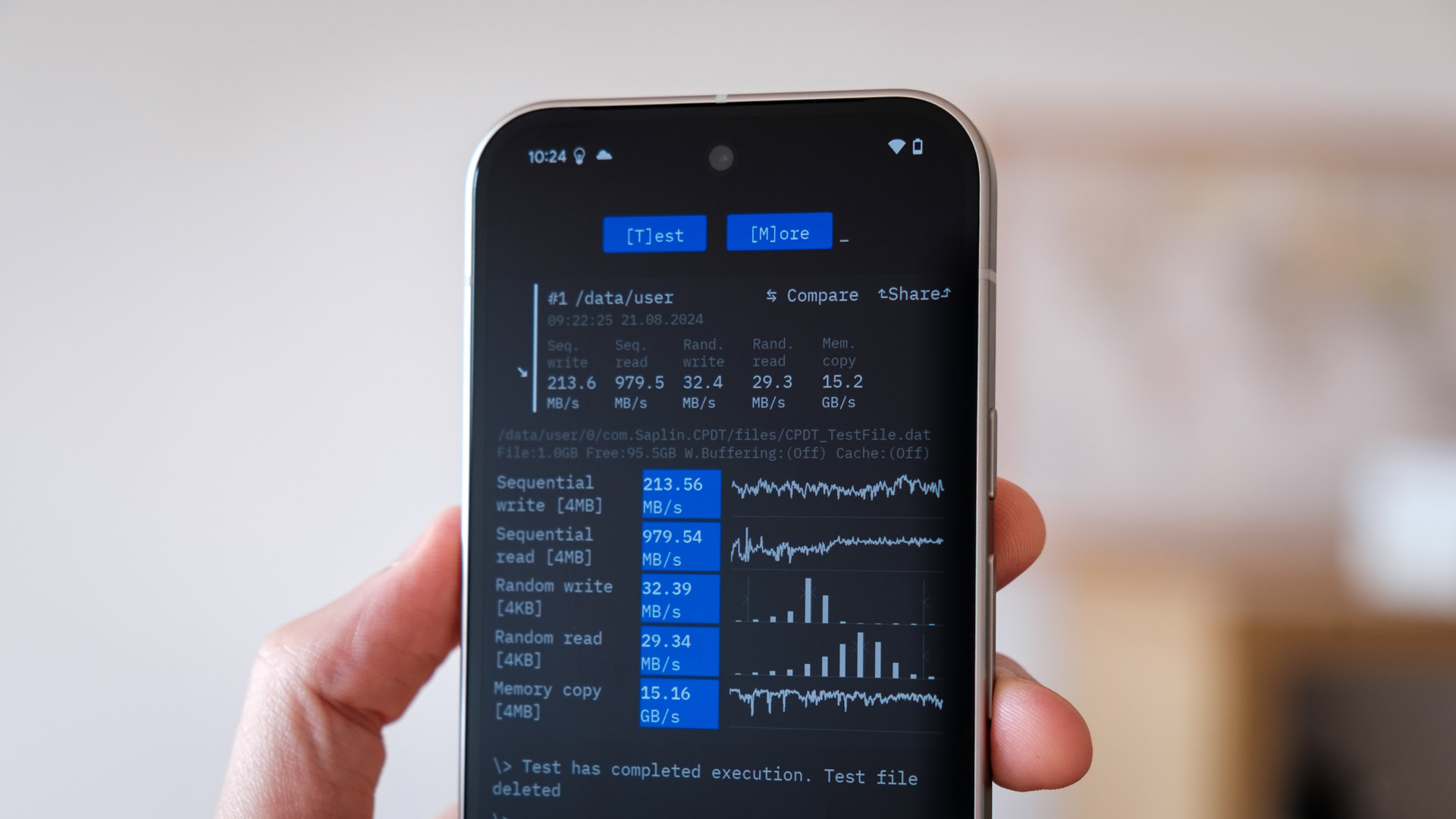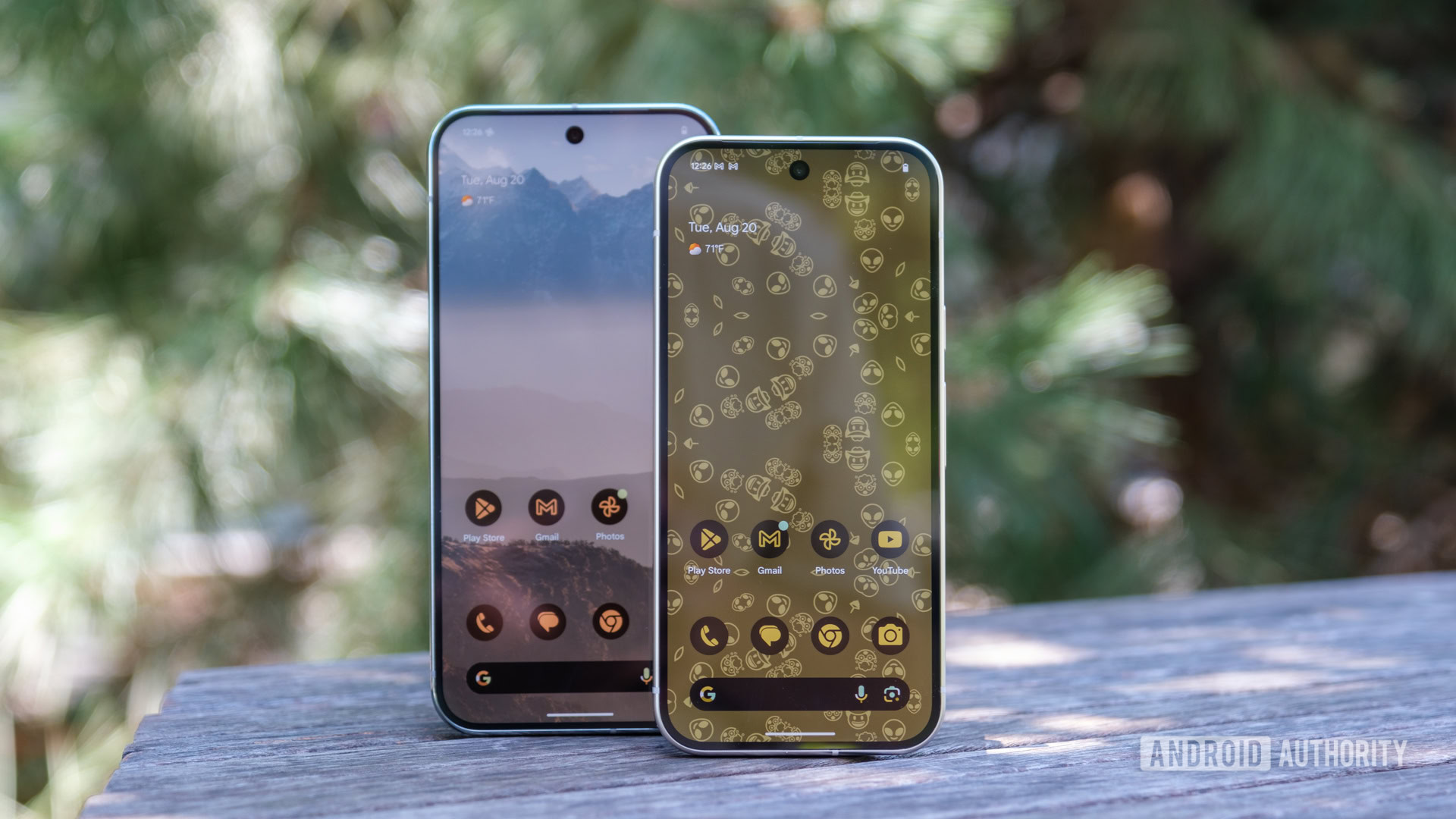Affiliate links on Android Authority may earn us a commission. Learn more.
The entire Google Pixel 9 series has UFS 3.1 storage, but does it even matter?
August 22, 2024

Shortly after the Google Pixel 9 series was announced, internet rumors started to swirl that, once again, the phone would ship with UFS 3.1 class storage instead of cutting-edge UFS 4.0. So we asked Google and can confirm this is indeed the case.
The Google Pixel 9 and Pro models all come with UFS 3.1 storage, even if you pick one of the expensive memory options. By contrast, Samsung only uses UFS 3.1 for its most affordable 128GB Galaxy S24 but ships faster UFS 4.0 storage on its 256GB and larger models.
'The Pixel 9 series use UFS 3.1.' - Google
Google isn’t alone in using UFS 3.1 memory, but it’s increasingly rare in the flagship space. The $799 OnePlus 12 has UFS 4.0, as does the $899 ASUS Zenfone 11 Ultra and the media-focused and uber-expensive Sony Xperia 1 VI. As an older technology, UFS 3.1 is more of a budget staple. If this all rings a bell, the affordable OnePlus 12R courted controversy for falsely advertising UFS 4.0 memory on its larger capacity models. Of course, Google is not being misleading.
Still, we’ve come to expect super-fast storage from flagship phones, and it might come as an extra disappointment given Google’s $100 price hike. OK, so the Google Pixel 9 series doesn’t have the fastest storage that money can buy. Does it even matter?
Is UFS 3.1 storage in the Pixel 9 a dealbreaker?
UFS 3.1 vs UFS 4.0; does it matter?
UFS 4.0’s claim to fame is, first and foremost, that it is up to twice as fast as UFS 3.1. However, other components, from the processor to the memory controller, can also affect the memory speed of individual devices. Something to keep in mind. To test, we grabbed a few phones to compare their speeds against the Pixel 9 and Pixel 9 Pro XL.
The eye-catching speed enhancement can be seen in the sequential read and write speeds, hitting a colossal 2.1GB/s on our fastest handset — the Zenfone 11 Ultra. These results average out to about 2x and 3x faster, respectively, on our UFS 4.0 handsets versus the Pixel 9 Pro XL.
| Sequential Read (MB/s) | Sequential Write (MB/s) | Random Read (MB/s) | Random Write (MB/s) | |
|---|---|---|---|---|
Google Pixel 9 [UFS 3.1] | Sequential Read (MB/s) 980 | Sequential Write (MB/s) 214 | Random Read (MB/s) 29 | Random Write (MB/s) 32 |
Google Pixel 9 Pro XL [UFS 3.1] | Sequential Read (MB/s) 911 | Sequential Write (MB/s) 357 | Random Read (MB/s) 30 | Random Write (MB/s) 31 |
ASUS Zenfone 11 Ultra [UFS 4.0] | Sequential Read (MB/s) 2130 | Sequential Write (MB/s) 1130 | Random Read (MB/s) 39 | Random Write (MB/s) 45 |
Vivo X100 Ultra [UFS 4.0] | Sequential Read (MB/s) 1620 | Sequential Write (MB/s) 952 | Random Read (MB/s) 38 | Random Write (MB/s) 65 |
That said, sequential reads and writes are not all that important unless you’re transferring absolutely massive individual files (think multiple GBs). In terms of moving data, the Pixel 9 is fast enough to saturate a typical 5Gbps (625MB/s) USB 3.0 connection when copying off the phone, although writing to it is a bottleneck. Only if you have a 10Gbps (1.25GB/s) USB 3.X or 40Gbps (5GB/s) USB 4 port on your laptop (as well as a speedy SSD) will you see a much bigger benefit to a UFS 4.0 phone.
Now, you might move files regularly if you record lots of videos, where faster memory can matter too. To record uncompressed 8K60 video, you’d need 750MB/s sequential writes or perhaps more. However, phones apply compression, which means you actually only need about 100MB/s, so even UFS 3.1 is more than capable of 8K video with bandwidth to spare. However, ironically for the Pixel, loading a large AI model from storage into RAM benefits from faster sequential reads. Perhaps this is partly why the latest Pixel Pro’s dedicate 3GB of RAM to keeping AI loaded up.
Random access is important for loading apps, and this sees the smallest performance boost.
For day-to-day apps, random reads and writes are the more traditional factors in device performance. Applications pull assets and data from all over the place rather than reading a big block of sequential memory. Moving to UFS 4.0 only nets about a 30% gain for random reads in our test. That’s certainly an improvement and will undoubtedly make loading up the biggest Android games feel a bit quicker, but it’s not the same colossal gain we see with sequential access. Random writes see a bigger 40% to 200% boost, likely depending on whether there’s additional caching.

Undoubtedly, there are speed benefits to UFS 4.0, but it’s all about context. Loading up a typical 200MB application would be a second faster on UFS 4.0 compared to UFS 3.1 (CPU and RAM speed being equal), which is hardly worth worrying about. You’re only likely to notice the difference when managing much larger apps and files.
You might expect UFS 4.0 when paying $999, but older storage won't ruin your experience.
That said, there are other benefits, too. The newer technology allows for larger capacities in a small footprint, with 2TB available now. UFS 4.0 is more battery efficient, too; Samsung’s chips consume up to 46% less power than their predecessors, while Micron claims its new UFS 4.0 storage is 25% more efficient. However, there are other factors at play other than just chip power when it comes to battery life. UFS 4.0 also boasts new capabilities for error correction and data refreshing, which could help the chips last longer.
UFS 4.0 is undoubtedly a nice luxury to have, especially when paying $999 or more for a flagship smartphone. Still, the Pixel 9’s older UFS 3.1 is unlikely to make or break your experience by itself. It all depends on what you’ll use the phone for. Personally, I’m more miffed about the Pixel 9 series’ measly 128GB entry-level storage capacity than its speed.

Excellent build quality, refined design
Extensive update policy

Excellent build quality
Flexible, capable cameras
Reliable update commitment

Gorgeous display
Seven years of software updates

8-inch folding display
Seven years of software updates
Thank you for being part of our community. Read our Comment Policy before posting.